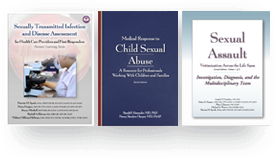Substance Abuse & Intimate Partner Violence
 In cases of domestic violence, substance abuse can have devastating effects. Several traits that go hand-in-hand with substance abusers are likewise associated with perpetrators of violence, such as loss of control, preoccupation, and obsession.
In cases of domestic violence, substance abuse can have devastating effects. Several traits that go hand-in-hand with substance abusers are likewise associated with perpetrators of violence, such as loss of control, preoccupation, and obsession.
How can substance abuse impact DV victims?
Both domestic abuse victims and substance abusers have a greater tendency to tolerate adverse consequences for small but addictive rewards, such as the “high” from a substance or an abuser’s occasional affectionate behaviors. While domestic violence is never the victim’s fault, those who use substances may be more likely to tolerate unhealthy relationships due to impaired judgment or poor financial situations. Consequently, some victims may turn to regular substance use as a coping mechanism during or after an abusive relationship.
For victims trying to escape a violent situation, substance addiction can make it more difficult to leave their abuser. Some shelters will turn victims away if they arrive impaired or kick them out for using a substance while housed there. Though the two are deeply intertwined, only shelters in a handful of states integrate treatment for domestic and substance abuse.
Individuals who abuse substances are more likely to become perpetrators of violence, and “the risk of domestic violence increases when both parties have a substance abuse disorder,” according to the Addiction Center.
Substance abuse within a relationship can create an environment where secrecy becomes normal, leading to an inherently unhealthy relationship due to a lack of communication. Denial, distortion of facts, and manipulation are all hallmark traits of both substance abuse and domestic violence. Unpredictability and constant stress are also seen in both situations; therefore, the environment of one is conducive to the other, as explained in STM Learning’s publication Intimate Partner Violence.
How many people are affected?
Studies regarding the correlation between domestic violence and substance abuse – cited within Intimate Partner Violence – have found that approximately 37% admit to a family or domestic history of physical violence. Twenty-two percent of those surveyed said they experienced physical violence as adults, and 18% admitted to being perpetrators of physical violence.
These statistics become increasingly alarming as the focus is narrowed. For example, in one study of adults seeking treatment for cocaine, 86% had been physically assaulted, with 50% reporting the assault had been at the hands of an intimate partner. Nearly half of those surveyed met the criteria for PTSD. Among women living in a residential treatment for chemical dependency, 73% said they had been raped at some point in their life, and 45% of them reported being raped multiple times.
With such a strong correlation, evidence of substance abuse is often tied to evidence of domestic abuse. Those seeking help for domestic violence may also require treatment for substance abuse, and vice versa. It is crucial that anyone handling a domestic violence case be equipped with information about substance abuse and is able to provide treatment options for the victim to pursue if necessary.
This blog was written by STM Learning’s editorial staff for educational purposes only. It is not intended to give specific medical or legal advice. For expert information on the discussed subjects, please refer to STM Learning’s publications.







